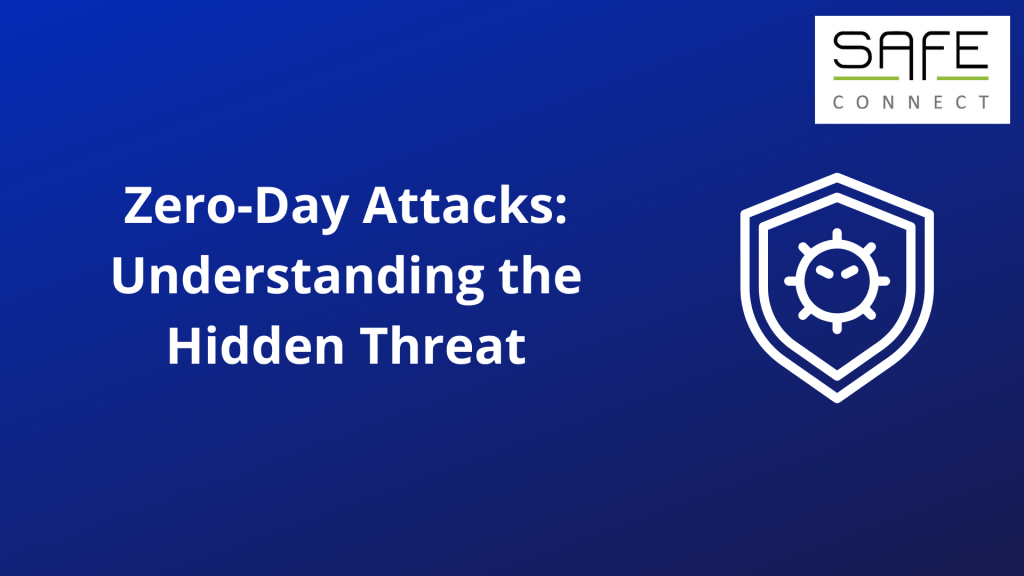
Zero-Day Attacks: Understanding the Hidden Threat
Home » Security » Zero-Day Attacks: Understanding the Hidden Threat
Is your organisation ready for digital danger? A zero-day attack or zero-hour threat is a cyber attack in which the attacker exploits a previously unknown vulnerability in a software or hardware system. They are particularly dangerous because standard security measures cannot detect it until the attack has already taken place. A zero-day attack comes in different forms. For example, the execution of external code, a malicious payload or a denial of service attack. They are particularly troublesome to defend because they take advantage of previously unknown vulnerabilities and there is no way to anticipate the attack. This is causing a lot of concern for organisations.
Zero-day attacks are becoming increasingly common as cybercriminals become more sophisticated and the number of vulnerabilities increases. According to a report by McAfee, zero-day attacks accounted for more than 20% of all attacks in 2019. Unfortunately, that trend continues to rise. In 2022, it was 54%. Because they are difficult to defend and can be very profitable for cybercriminals, they will continue to pop up in the future.
Examples of zero-day attacks
Avast & AVG
Avast and AVG are two antivirus programs found on computer systems worldwide. The cybersecurity company, called SentinelOne, discovered two looming zero day vulnerabilities. That discovery took no less than a decade to discover.
Supposedly, millions of users came into contact with this vulnerability. The vulnerabilities were reported in December 2021 and, as a result, Avast released security updates in February 2022. The vulnerabilities are now known as CVE-2022-26522 and CVE-2022-26523.
Log4J
Apache Log4j is the software component used in web applications and systems running Java. The piece of software takes care of logging data. Because it has been used around the world for 20 years, the risk occurred internationally and had a huge impact. The vulnerability came to light on Friday 10 December 2021 with the name Log4Shell or CVE-2021-44228.
Solarwinds
The zero-day attack took place in September 2019 and remained undetected until December 2020. The hackers gained access to SolarWinds’ systems and were able to inject malicious code into Solarwinds Orion Platform software updates. These updates were then installed by Orion software customers, including both federal agencies and leading multinationals. The hackers gained remote access to sensitive information, confidential data, emails and documents. Supposedly, more than 1,000 developers worked together to carry out this attack. The zero-day vulnerability is tracked as CVE-2021-35211.
Protecting your organisation from a zero-day attack
To protect against a zero-day attack, it is important to have a comprehensive cyber security strategy. This includes measures such as strong passwords, two-factor authentication, regular security updates, patches, network segmentation and up-to-date software. It is also important to monitor your systems for suspicious activity and have a cyber recovery plan. Following these steps will reduce your risk of becoming a victim of a zero-day attack.
Sandboxing technique
But basic security doesn’t fully cover you. Time to upgrade. An advanced technique is sandbox technology, which is a security measure used to detect and prevent zero-day attacks. It works by executing the suspicious code or file in a virtual environment isolated from the rest of your system. This allows the code or file to be monitored and analysed without any risk of damaging the system. If the code or file is identified as malicious, it is blocked and not allowed into your system. The sandbox technique can be used as an effective way to detect and prevent zero-day attacks. Safe-Connect collaborates with Microsoft and Fortinet on these techniques
Are you ready to secure your organisation? Safe-Connect is your trusted security partner. Request a consultation with our experts today. We are ready to help you!
Contact us